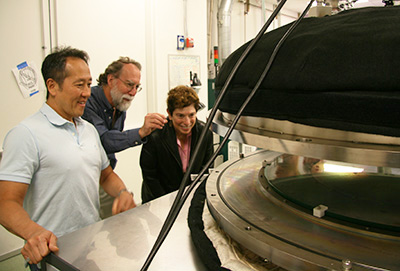Leading Swiss university focuses on the development of next-generation semiconductors based on AIXTRON BM system
AIXTRON SE (FSE: AIXA), a worldwide leading provider of deposition equipment to the semiconductor industry, today announced that the École Polytechnique Fédérale de Lausanne (EPFL) in Lausanne (Switzerland) has purchased a BM NOVO system. This versatile tool which can produce virtually all variations of 2-dimensional materials (2D) required for emerging optoelectronic applications is dedicated to support the University’s research projects coordinated by Prof. Andras Kis and Prof. Aleksandra Radenovic.
AIXTRON’s BM NOVO system uses a unique combination of plasma-enhanced chemical vapor deposition (PECVD) technology and metal organic chemical vapor deposition (MOCVD) technology to enable the growth of high quality 2D materials such as transition metal dichalcogenides (TMDCs) e.g. molybdenum disulfide (MoS2) or tungsten diselenide (WSe2).
Source: Aixtron LINK
AIXTRON SE (FSE: AIXA), a worldwide leading provider of deposition equipment to the semiconductor industry, today announced that the École Polytechnique Fédérale de Lausanne (EPFL) in Lausanne (Switzerland) has purchased a BM NOVO system. This versatile tool which can produce virtually all variations of 2-dimensional materials (2D) required for emerging optoelectronic applications is dedicated to support the University’s research projects coordinated by Prof. Andras Kis and Prof. Aleksandra Radenovic.
AIXTRON’s BM NOVO system uses a unique combination of plasma-enhanced chemical vapor deposition (PECVD) technology and metal organic chemical vapor deposition (MOCVD) technology to enable the growth of high quality 2D materials such as transition metal dichalcogenides (TMDCs) e.g. molybdenum disulfide (MoS2) or tungsten diselenide (WSe2).
Source: Aixtron LINK



%20(1).png)














